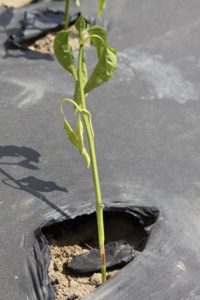Several states are now reporting and you may have read or heard news reports of packets of seeds arriving in the mail from foreign shipping addresses that were not ordered. If you receive such a packet, DO NOT open or discard them. Rather, follow these directions from the NJ Dept of Agriculture:
UPDATED NJDA ALERT (https://www.nj.gov/agriculture/news/hottopics/topics200727.html)
We have been receiving reports of people receiving seeds in the mail from China that they did not order. Sometimes the seeds are sent in packages stating that the contents are jewelry. Unsolicited seeds could be invasive, introduce diseases to local plants, or be harmful to livestock.
Here’s what to do if you receive unsolicited seeds from another country:
This is known as agricultural smuggling. Report it to the USDA!
- DO NOT plant them and if they are in sealed packaging don’t open the sealed package.
- Take a photo of the package and seeds and send the photos to the New Jersey Department of Agriculture Joseph.zoltowski@ag.nj.gov and USDA SITC at SITC.Mail@aphis.usda.gov
- Maintain the seeds and packaging and send to the USDA Office located at 1500 Lower Rd, Linden NJ 07036 for evidence.
If individuals are aware of the potential smuggling of prohibited exotic fruits, vegetables, or meat products into or through the USA, they can help APHIS by contacting the confidential Anti-smuggling Hotline number at 800-877-3835 or by sending an Email to SITC.Mail@aphis.usda.gov. USDA will make every attempt to protect the confidentiality of any information sources during an investigation within the extent of the law.
****************************************************************


